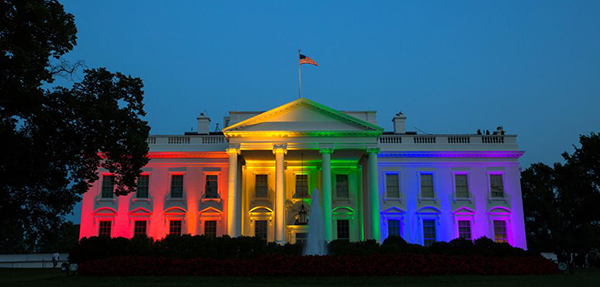
There are two divergent trends actively at work globally today. Examples of each trend were seen on June 26. On that day, we saw three terror attacks and the funeral of one of the nine victims of a church shooting in South Carolina. That same day, the U.S. Supreme Court issued a decision on equal marriage rights.
On the one hand, you see the intolerance of ideological extremism that plays on those who feel isolated, disaffected or morally superior—whether it be ISIS militants, white supremacists or others. The U.S. State Department now identifies over 200 violent extremism groups globally.
On the other hand, we are moving toward an Age of Inclusivity.
The U.S. the Supreme Court’s recent historic ruling on marriage equality demonstrates that a transformation in the societal acceptance of LGBT rights has picked up steam in the United States at a speed that surprised many. In addition, the election of a black president and various female contenders from both parties for the 2016 election reinforce this shift. As Martin Luther King Jr. said, “The Arc of the moral universe is long, but it bends toward justice.”
This promotion of inclusivity is not limited to the United States. In May, Ireland, one of the most Catholic and traditional countries in the world, joined 19 other countries to lead the way in promoting marriage equality and inclusivity for LGBT individuals.
Furthermore, a cultural backlash towards symbols perceived by many as intolerant, such as the Confederate flag, has recently swept the United States. In a testimony to the faith and forgiveness shown by parishioners of a black church in Charleston, S.C., which saw nine of its faithful brutally killed by a man espousing racial hate, society has begun to reevaluate tolerance for these symbols.
While some may say that these symbols and beliefs should likewise be tolerated as representations of others’ views, these emblems fail to pass the test of inclusivity due to their historic association with racial division and hate.
There is obviously a long way to go before the U.S. or other countries are truly tolerant and respectful of racial, gender, religious and cultural differences, but the arc of history is definitely starting to bend toward inclusivity and social justice.
Inclusivity and global development
Whether it be in successful political transitions from a Christian to Muslim president in Nigeria, or the increased acceptance of girls’ education in developing countries, greater inclusivity can lead to a cultural shift towards tolerance and peacebuilding. This can subsequently lead to more prosperous societies.
In fact, inclusivity is a prominent concept in many of the United Nations Sustainable Development Goals, set to be approved in September by more than 200 world leaders as our collective goals for a more prosperous, democratic and healthy world.
This turn towards inclusivity focuses leaders’ attention on how women’s voices and rights are included in development decisions; how the ideas and energy from young people, who now account for 30 percent of the global population, are taken into account in policies and programs; and how ethnic and religious minorities are given representation in government and other spaces.
Tolerance and broader participation resulting in greater progress—this is the promise of the Age of Inclusivity.
Tackling the challenges facing inclusivity
When confronted with the shift toward inclusivity, critics will cite moral relativity and the extreme challenges of accommodating all groups. The Constitution in the U.S. and in many countries was developed to help protect the rights of minorities.
However, the leadership of the younger generations in promoting this rapid transformation and acceptance of inclusivity holds great promise for how we can not only create but appreciate diversity.
We need to more effectively engage potentially disaffected youth around the world who are vulnerable to the messages of intolerance and extremism through not only social media efforts but targeted interventions. These interventions may be through their families, peer groups, educators, religious leaders or others.
Exposure to “the other” almost always generates empathy and understanding. The increasing linkages in our world are creating pathways for peace among youth as they engage with their neighbors, fellow citizens and people around the world. Bridging the divide nurtured by fear, hatred and injustice is a long journey, but it seems recently, we have quickened our pace.
The more we are successful in empowering youth to move towards a greater appreciation of inclusivity and a greater sense of hopefulness, it truly will be an “Age of Inclusivity”.
Michael McCabe is Senior Associate for Training & Capacity Building at Creative Associates International.

